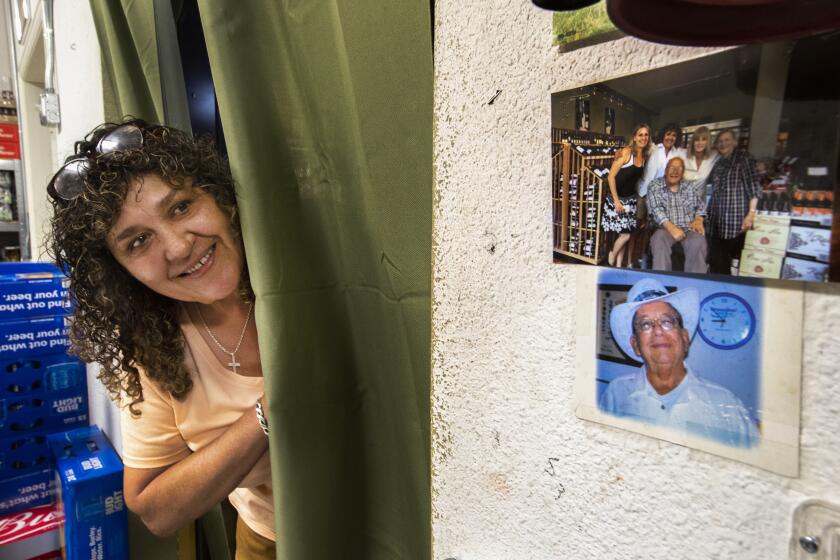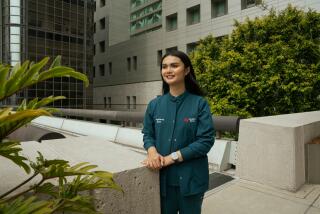He made this town the world’s ‘sex-change capital,’ but he’s not honored here
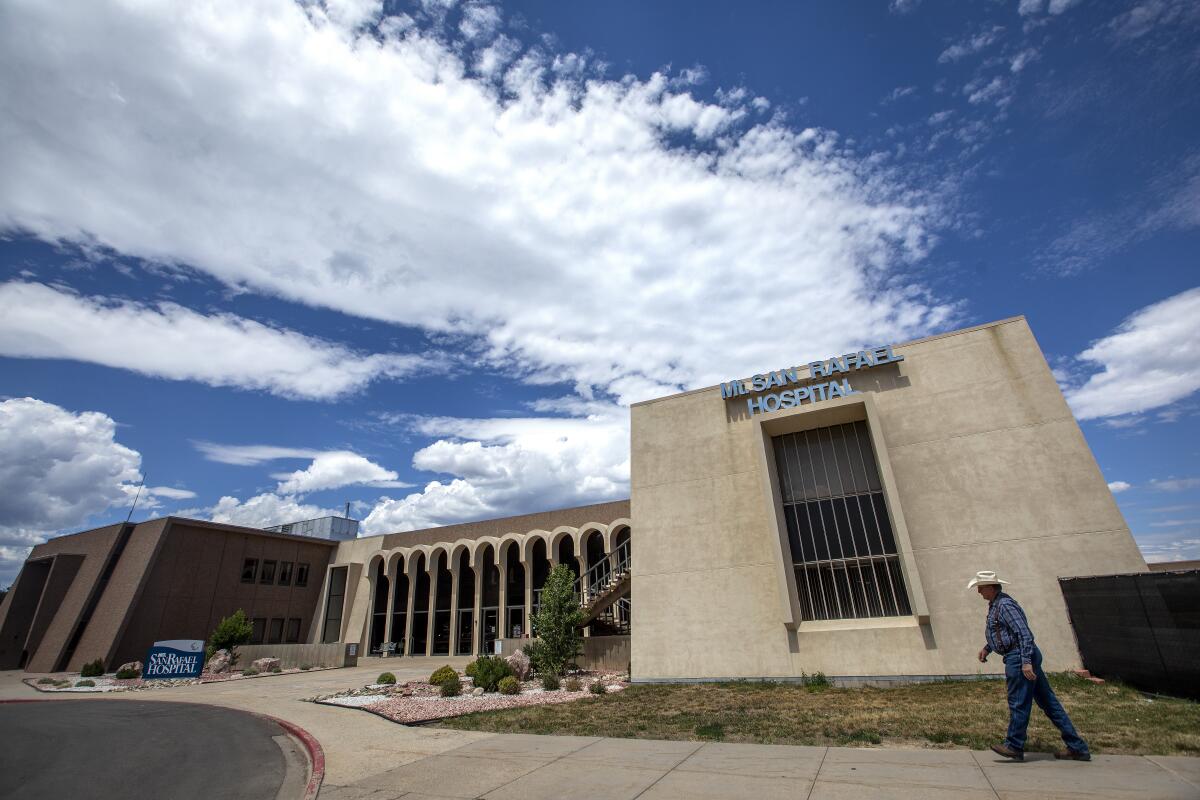
TRINIDAD, Colo. — If you’re looking for evidence that this little-known Western outpost was, for 41 years, known as the world’s “sex-change capital,” be prepared to look a long time.
Dr. Stanley Biber, the colorful country surgeon whose pioneering work made “going to Trinidad” a euphemism for gender confirmation surgery, has been dead since 2006. His decades of work, which brought medical pilgrims from around the world to this heavily Catholic former coal-mining town, is not commemorated in any way at Mt. San Rafael Hospital, where Biber and his protege, Dr. Marci Bowers, performed an estimated 6,000 gender surgeries between 1969 and 2010.
For the record:
11:15 a.m. Sept. 12, 2019A photo caption on an earlier version of this article misidentified Trinidad, Colo., Councilman Joe Bonato as Joe Binato.
Biber’s widow removed a display of her late husband’s medical artifacts from the hospital’s lobby when she moved to Pueblo after his death and says her discussions with the city about naming a nearby street after Biber went nowhere.
You’ll find no statue, memorial, or even a plaque marking Biber’s long career as the man who brought Trinidad world renown, though many other significant chapters in local history are acknowledged by plaques along downtown sidewalks. It wasn’t until May, more than 13 years after the surgeon’s death, that the local museum included any mention of his work in an exhibit space that celebrates practically every other detail of the city’s remarkable Old West history.
Until then, the only evidence that Biber even existed were the personal stories shared by many in town whose lives he touched, his unremarkable gravestone in the Jewish section of Trinidad’s Masonic Cemetery and the outdated directory of tenants painted on the gray marble wall of a side entrance to Main Street’s First National Bank building, where for decades a creaky elevator carried patients up to his musty private office for pre-surgery consultations. The building’s hand-lettered mention of “Dr. S.H. Biber, P.C., Surgeon” among the fourth-floor tenants remains today simply because no one has bothered to remove it.
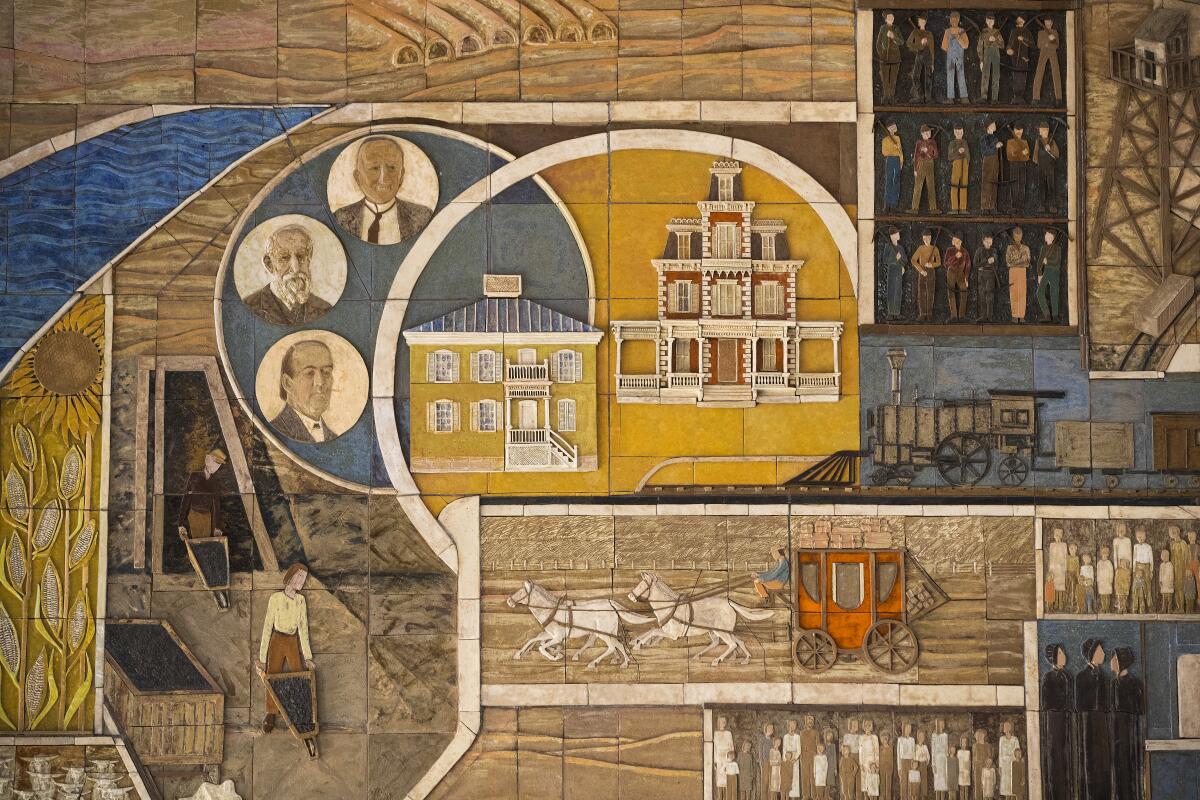
But at this pivot point in American history, when many still struggle to reconcile a binary view of gender with the proven complexities of a gender spectrum, and hard-fought rights advances for transgender Americans are being rolled back, the story of Stanley Biber and his pioneering work in Trinidad offers a remarkable tale of insight and compassion. Why did a doctor in a Western frontier town embrace transgender men and women decades ahead of most, and dedicate a good deal of his professional life to easing their pain? And why does he remain such an unknown figure?
::
Some say the story began during Biber’s service as a battlefield surgeon in the Mobile Army Surgical Hospital during the Korean War.
Korea is where Biber thrived on the challenge of innovating as his patients’ conditions changed, and he developed a reputation for tirelessness by performing 37 consecutive surgeries before passing out from exhaustion. He honed his surgical dexterity trying to save soldiers whose lower bodies were devastated by wounds to reproductive organs, bowels and urinary tracts.
When he started the gender-confirmation surgeries in Trinidad, Colo., Dr. Stanley Biber had some explaining to do — to the nuns who worked as patient advocates.
While Biber excelled at a number of things during his postwar life — he claimed to have missed the U.S. Olympic weightlifting team “by 20 pounds,” and even into his 80s would roll up his sleeves over his biceps to show off his guns — he seized the chance to become a small-town doctor. In 1954, he joined the staff of a clinic the United Mine Workers opened in Trinidad, where about half of Las Animas County’s 26,000 residents lived. At that point, Biber was the only general surgeon in town.
“He was so dedicated there,” says Ella Mae Biber, the fourth of his five wives and to whom he was married for 23 years. “He delivered so many babies, did everybody’s surgery, and everybody trusted him tremendously. He loved everyone in Trinidad. You don’t see doctors commit to their patients anymore. He took care of them from birth to death, in most cases.”
Column One
Column One is a showcase for compelling storytelling from the Los Angeles Times.
It’s hard to find a local today who’s not eager to share a personal story of the time Biber set a broken bone, did an unexpected minor surgery during an office visit, or delivered them squalling into the world. Trinidad resident Dick Hamman credits Biber with saving his father’s life when he developed peritonitis after an appendix rupture: “You put a scalpel in his hand and he was Michelangelo.”
::
The moment that would change Biber’s life, the reputation of his adopted hometown and the lives of thousands of transgender patients “came to him by accident,” his stepdaughter Kelly Biber recalls. “It just kind of walked into his office one day.”
His visitor was a social worker with whom Biber had often consulted. As Biber recounted in various interviews, the red-haired woman lingered a moment after their meeting ended. Eventually, she asked a question: “Can you do my surgery?”
The ever-confident Biber agreed without discussion, boasting, “Of course I can do your surgery. What do you want done?”
His visitor explained that she was a “transsexual woman.” Biber pondered her words before finally asking: “What’s that?”
It was 1969. Sure, he knew about the Christine Jorgensen case, in which a former Army clerk had gender confirmation surgery in 1952. Who didn’t? But at the time, the term “transsexual” was hardly part of the cultural vocabulary.
You put a scalpel in his hand and he was Michelangelo.
— TRINIDAD RESIDENT DICK HAMMAN
At the time Johns Hopkins Hospital in Baltimore was an American center of what then was called “sex-change surgery.” Biber called a plastic surgeon there who had done about 13 such operations, seven of which were what Biber described as “simple penectomies” similar to the operation done on Jorgensen. That surgeon eventually sent Biber a set of rudimentary hand-drawn diagrams showing the basic technique for deconstructing genitalia and reconstructing it into a vagina. Biber looked over the drawings and called the social worker back. “Well, I’ve never done one, but if you want to do it, I think we can do it.”
::
In the late 1960s, transgender men and women seeking surgical relief didn’t have many options, but many were emboldened by an evolving culture. Susan Stryker, author of the 2008 book “Transgender History,” describes the dawning of a “transgender aesthetic” back then — gender-bending entertainers such as rock artists the New York Dolls and David Bowie were finding their way into the American mainstream — that signaled a changing relationship between appearance and assigned sex. It was the start of a cultural conversation about how gender might be more complicated than a simple binary choice: male or female?
But back when many of the better-known university clinics were following the lead of influential Johns Hopkins, which decided to drop its program in 1979, Biber’s fledgling specialty practice in Trinidad was a revelation to many transgender men and women. Here was a skilled surgeon at a real hospital who offered them help, dignity and hope — all with a dose of unflappable confidence, and without judgment. That combination was enough to coax people to Trinidad from thousands of miles away.
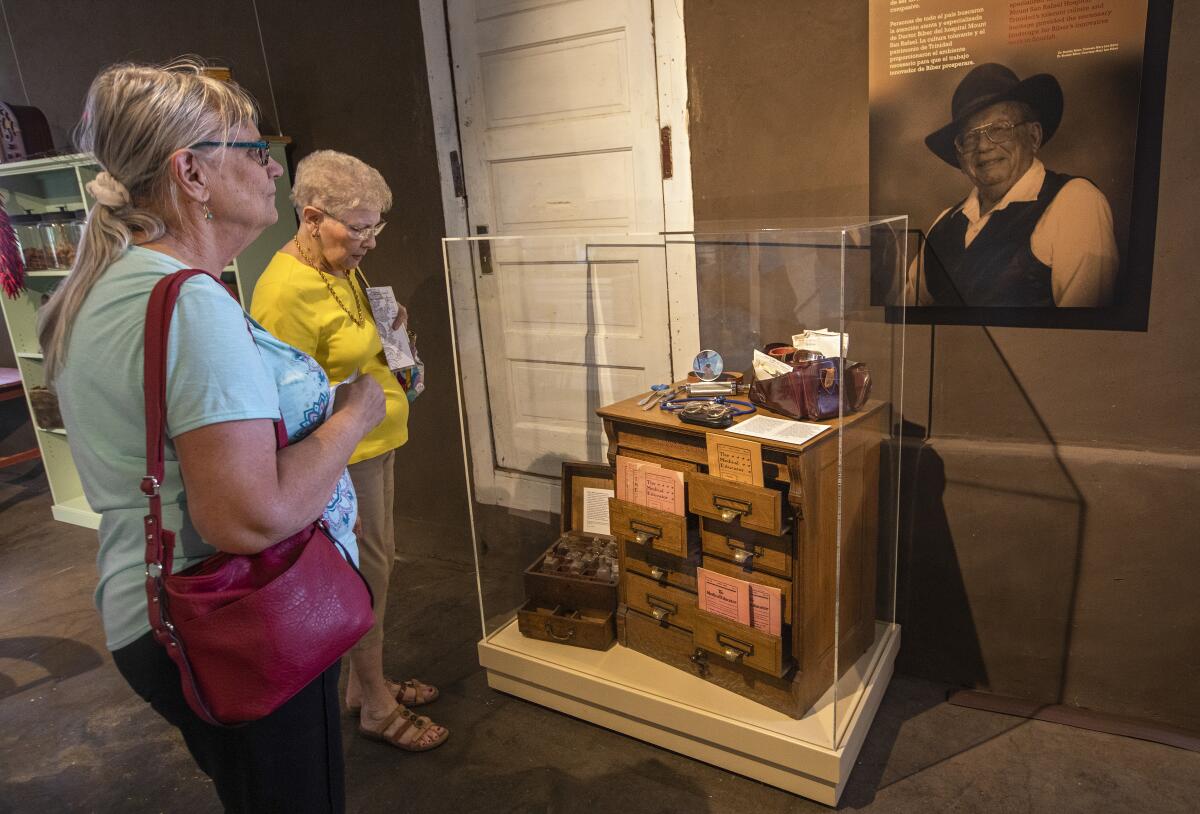
During his peak years, Biber was doing up to four gender confirmation surgeries a week, for both male-to-female and female-to-male patients.
His work made headlines — and occasionally drew the attention of self-righteous outsiders. In 1999, for example, members of the staunchly anti-LGBTQ Kansas-based Westboro Baptist Church arrived to picket what its news release for the event described as “Satan’s physician” and the town it called the “anteroom to Hell.” Feature stories about Biber appeared in this newspaper and other national media, and TV show host Geraldo Rivera and his camera crew documented a surgery.
As far as his grandkids are concerned, Biber’s fame peaked with a 2005 episode of the animated TV series “South Park” called “Mr. Garrison’s Fancy New Vagina,” in which the show’s transgender schoolteacher character travels to see Dr. Biber at the Trinidad Medical Center to undergo surgery. (Biber was not pleased, his stepdaughter Kelly recalls.)
Trinidad as the world’s “sex-change capital” didn’t register much in the mainstream American consciousness during those years, and was easy to dismiss as a distant signal emanating from the middle of nowhere. Transgender men and women were unfamiliar to many, and hard to fathom. But day in and day out, week after week, month after month, year after year, the pilgrims came to Trinidad.
They continued to do so until Biber’s age and inability to get liability insurance caught up with him in 2003. He died three years later after training Bowers, a transgender surgeon from Seattle he hoped would carry on his practice in Trinidad. But where Biber was low-key, humble and a longtime member of the community who once served on the county commission, Bowers’ silver Porsche Boxster and more active courtship of publicity — she starred in a short-lived BBC reality TV series called “Sex Change Hospital” — didn’t sit well with the locals and hospital officials. She left town in 2010, moving her practice to Burlingame, Calif., and bringing that peculiar chapter in the city’s history to a close.
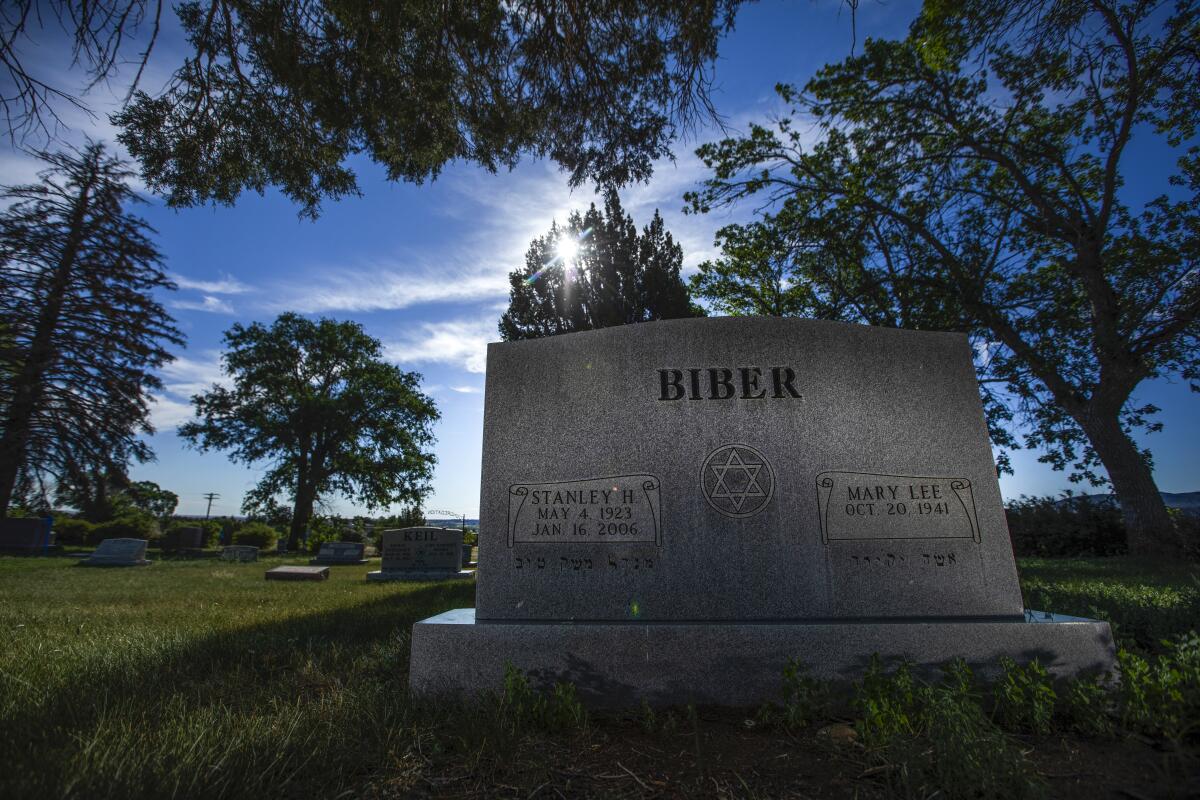
::
The local invisibility of the man behind such a vital chapter in transgender history may be less a result of social taboo, discrimination and local politics than Trinidad’s own identity struggle over the years.
Founded in 1862 after rich coal seams were discovered in the region, Trinidad was a company town by 1910. Colorado Fuel and Iron operated the largest steel mills in the West, as well as dozens of mines, coke ovens, transportation lines and other infrastructure needed to support the local industry. CF&I created countless small communities for the mine workers it recruited from throughout Europe, believing that people who spoke different languages were less likely to organize into unions to improve the often brutal working conditions.
Those conditions led to a notorious chapter in labor history just a few miles north of Trinidad. Union leader Louis Tikas, 12 children and two women were among 20 who died in a violent company crackdown known as the Ludlow Massacre in spring 1914 — a conflict that former Colorado state historian William J. Convery has called “the bloodiest civil insurrection in American history since the Civil War.”
Trinidad transformed itself after the coal industry began to fade in the 1920s, achieving a strange sort of prosperity, or at least notoriety, during Prohibition when Chicago mobster Al Capone and his family hid out in Trinidad and nearby Aguilar by blending in with the Italian immigrant families who continued to call the city home.
Those various bursts of 20th century prosperity left Trinidad with lavish hotels, a Carnegie Library, an opera house, churches and the oldest continuously active synagogue in the state. A 2012 promotional film produced in part by the county Chamber of Commerce referred to Trinidad as “the Victorian jewel of southern Colorado” without ever mentioning the medical claim to fame for which today it remains best known.
Lately, Trinidad, nicknamed “Weed Town, USA” by High Times magazine, has become a center of legal marijuana cultivation and sale. Thanks to its proximity to several states where recreational marijuana remains illegal, it has attracted thousands of pot tourists, and the town of fewer than 10,000 residents now boasts more than 30 such enterprises. The revenue is helping with long overdue upgrades to Trinidad’s infrastructure, but the weed boom may not last forever, especially if neighboring New Mexico legalizes in the coming years.
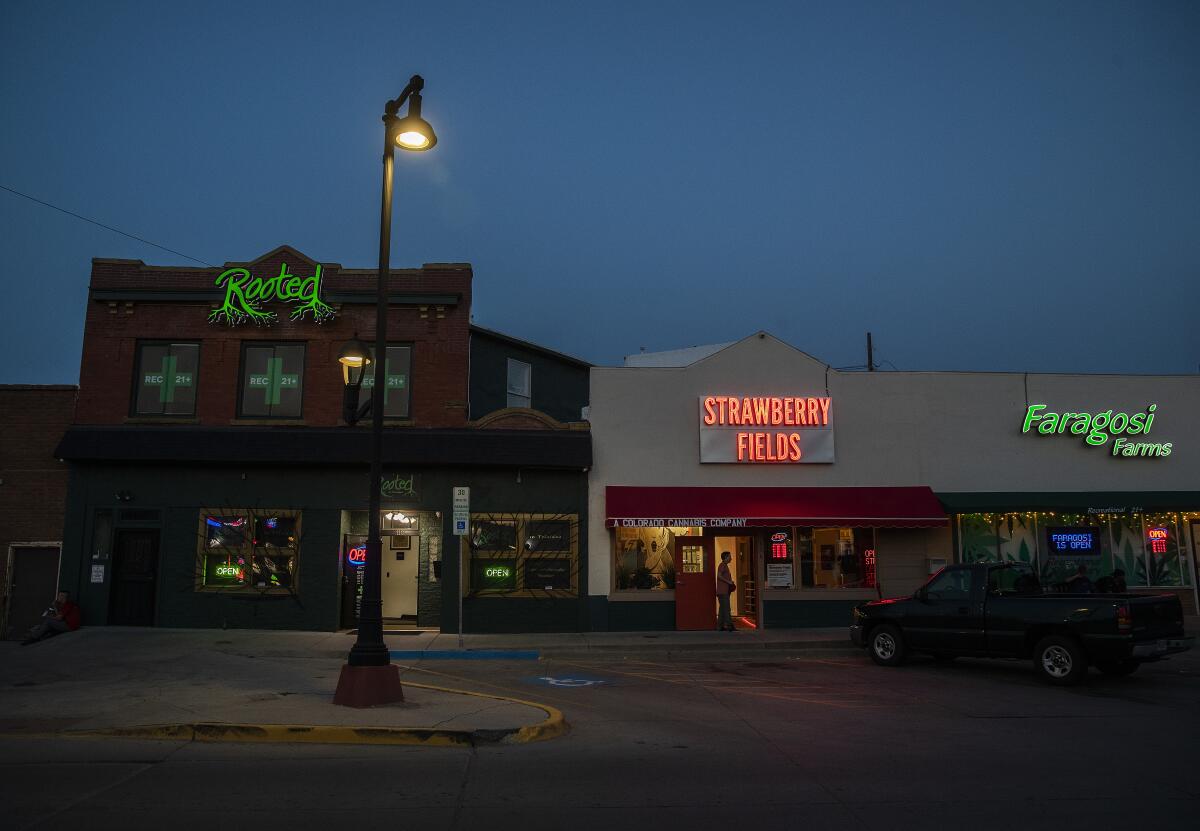
City leaders already are looking beyond the current green rush. They envision a community as a center for arts and recreation. The city and two conservation groups just announced a $25-million plan to buy Fisher’s Peak, the iconic stair-stepped mesa that overlooks the city, as well as the 30-plus square miles of wilderness around it. They plan to build a hiking trail from the center of town up to the peak, and the state announced plans this week to turn it into a state park.
During my spring 2018 visit to research a book about Biber’s career in Trinidad, the surgeon’s legacy was entirely invisible. But 15 months later, there was talk of plans to celebrate him, a local 1960s-era commune called Drop City and other creative renegades in a new counterculture museum, which would be part of the new state-orchestrated creative district taking shape in the heart of downtown. It’s still in the planning stages, but the possibility suggests a growing acknowledgment that Biber has perhaps been overlooked.
The most telling sign that the city is getting more comfortable with Biber’s place in local history is the oblique line in the new Trinidad Visitor’s Guide. Without mentioning Biber by name, it reads: “For half a century, Trinidad welcomed thousands of individuals seeking to become who they were born to be.” It touts that as evidence that Trinidad is “one of the most welcoming places in the country.”
Trinidad native Jay Cimino, chief executive of the Phil Long chain of car dealerships and a benefactor behind a number of town initiatives, also foresees a spot for Biber in the gallery of Trinidad’s “champions” he’s assembling in the entry hall of the refurbished Champions Building on Commercial Street, not far from Biber’s old office. That gallery celebrates not just local sports and education heroes, but also those who “championed” people who needed help. Those include Sister Blandina Segale of the Sisters of Charity religious order who helped establish Colorado’s first school district in Trinidad and whose kindness is said to have helped persuade Billy the Kid to change his outlaw ways.
“It certainly would not surprise me if Biber’s name came up as a champion in this town,” Cimino says. “It should.”
::
You may have concluded that Biber’s obscurity suggests a certain discomfort among locals with his chosen area of specialty, or a continuing marginalization of that important history for transgender Americans. Most locals will tell you that you’re wrong, including one you might expect to take Biber’s exclusion as a personal slight.
Trinidad City Councilwoman Michelle Miles came to Trinidad for gender confirmation surgery in 2005 and later made it her home — one of the few medical pilgrims to have done so. She says Trinidad is just not the kind of place that goes around putting up statues and plaques.
“The only commemorations I see are Coal Miners Memorial Park and the Coal Miners Museum, because that’s such a rich part of Trinidad’s tradition,” says Miles, a former Wall Street investment banker. “So are Billy the Kid, Bat Masterson, Doc Holliday and Kit Carson. Good lord, it’s an incredible history.”
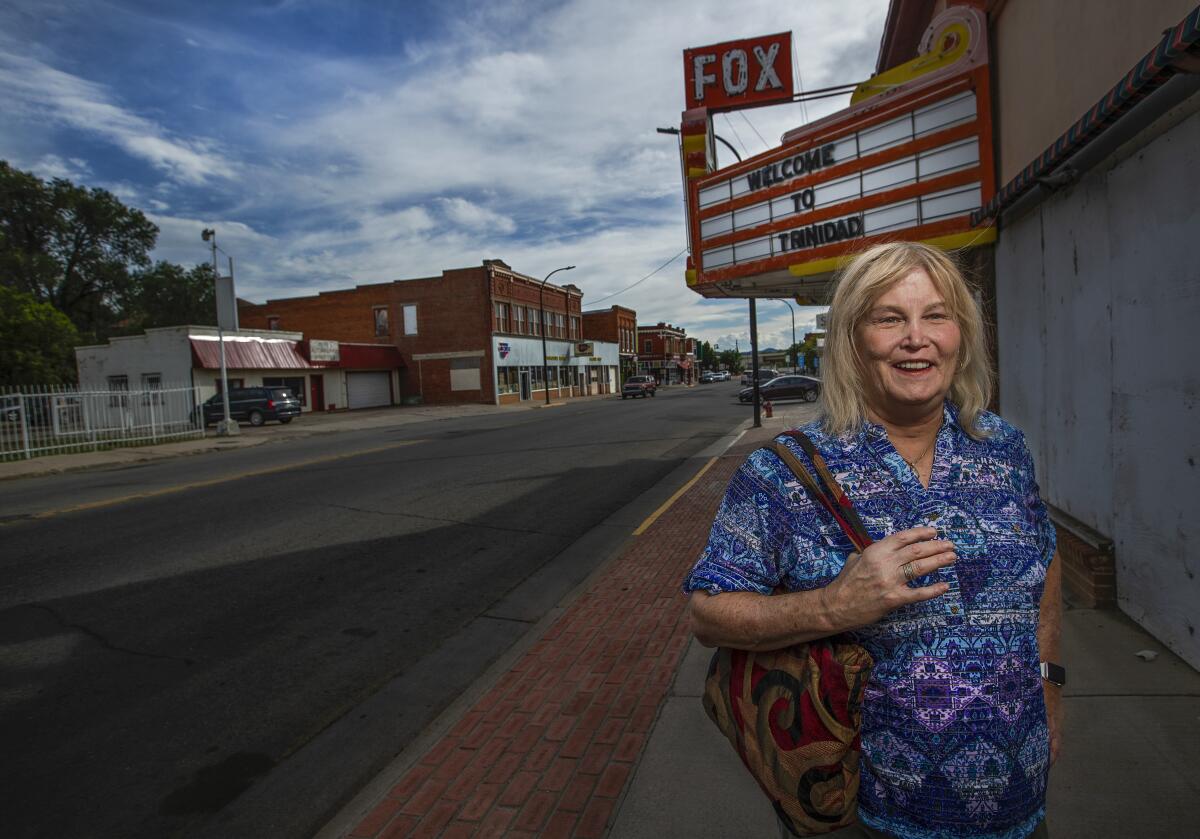
Like so much of the West, Miles says, her adopted hometown is “driven by people looking for an opportunity to re-identify themselves, and reinvent themselves.” Even today, she adds, identity politics don’t matter much in Trinidad. “I don’t run on trans issues when I run for City Council. I just live my life. People casually know that I’m trans, and it’s OK, and that’s just the way it is.”
Paula Manini, former director of the Trinidad History Museum, voiced the same sentiment to NPR in a piece that aired shortly after Biber’s death: “You know that Western attitude … what you do is your business, what I do is mine, and that’s it.”
Dawn DiPrince, chief operating officer of History Colorado, the state historical society, was the lead developer of the “Borderlands” exhibit that opened in May at the Trinidad History Museum. It focuses on how land management and healthcare changed in that frontier region after the Treaty of Guadalupe Hidalgo moved the Mexican border farther south and made southern Colorado part of the United States. The exhibit includes a small tribute to Biber — apparently the first of its kind in town — that includes the old camera the surgeon used to take pre-surgery photographs of his transgender patients. During a recent visit, museum director Kirby Stokes proudly showed off the Biber display.
“When you operate in a borderland, you’re on the margins, not close to the centers of power,” DiPrince says. “If you exist on the margins, there’s a lot of opportunity for invention and creativity, and for taking risks that people would not ordinarily do if they were more in the mainstream.”
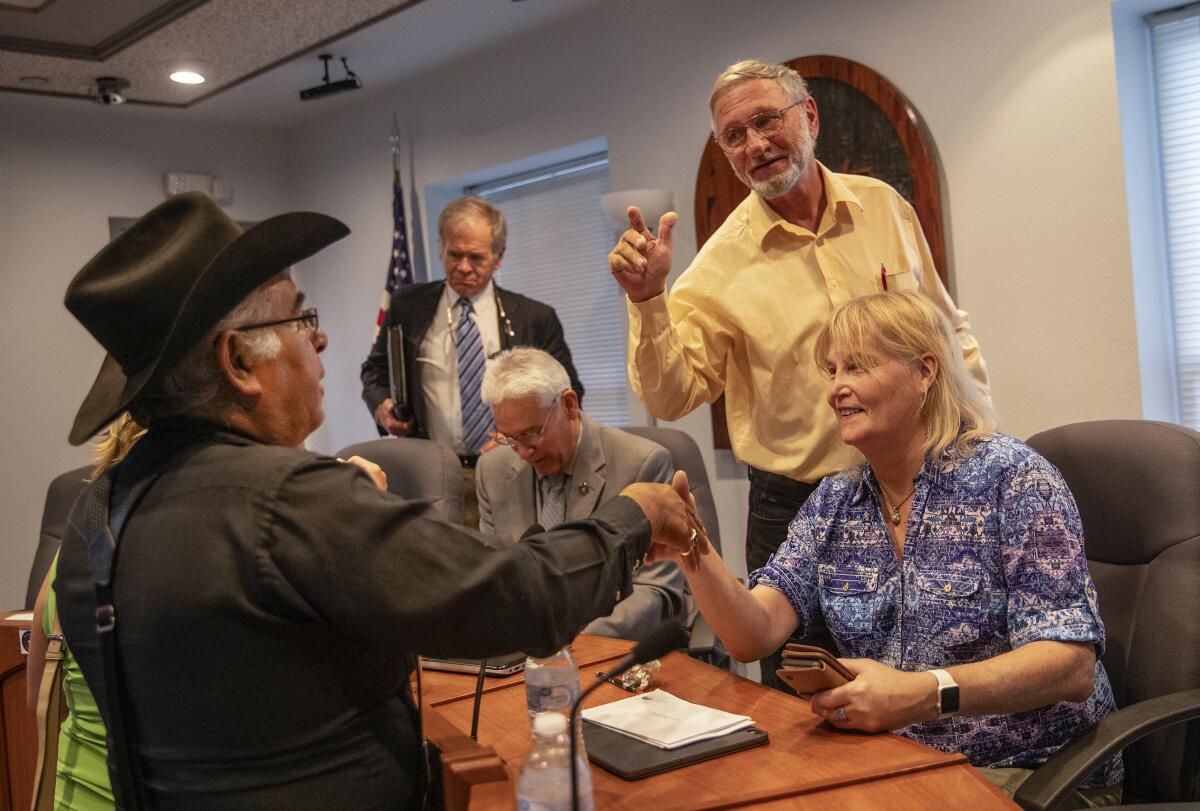
DiPrince says Biber was a perfect example of that, and suggests that remote Trinidad may have been one of the few places where his transgender work could flourish the way it did.
Miles says a more elaborate Biber tribute may someday follow, but notes that the town only recently erected a statue honoring Greek immigrant and labor hero Louis Tikas, the first victim in the Ludlow Massacre, and only then because his family and the Denver chapter of the Foundation of Hellenism of America commissioned it. Miles says Trinidad’s only involvement was to have city workers build a pedestal along Main Street.
That public commemoration of Tikas took 104 years.
Former Los Angeles Times Magazine senior editor Martin J. Smith has just completed a nonfiction book titled “Post-Op: Untold Stories of Life, Love, and Transformation from the World’s Unlikely ‘Sex-Change Capital.’ ”
More to Read
Sign up for Essential California
The most important California stories and recommendations in your inbox every morning.
You may occasionally receive promotional content from the Los Angeles Times.
